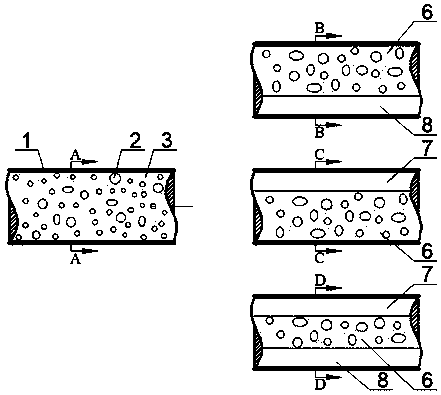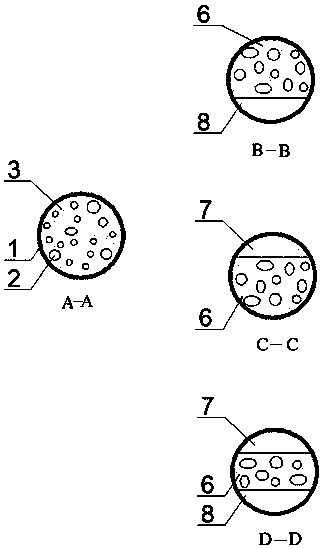A Method for Determination of Viscosity Characteristics of Oil-Water Emulsion System Considering Phase Separation Behavior
A technology of oil-water emulsification and determination method, which is applied in flow characteristics, analysis materials, material excitation analysis, etc., and can solve problems such as retention
- Summary
- Abstract
- Description
- Claims
- Application Information
AI Technical Summary
Problems solved by technology
Method used
Image
Examples
Embodiment Construction
[0076] Below in conjunction with accompanying drawing, the present invention will be further described:
[0077] Such as figure 1 As shown, in the oil-water mixed pipeline 1, the dispersed phase water phase 2 is dispersed in the continuous phase oil phase 3 to form the original water-in-oil (W / O) emulsification system. In , due to the occurrence of phase separation behavior, the formation of figure 2 Three possible stratification forms are shown: free oil phase 7 and homogeneous emulsion phase 6, homogeneous emulsion phase 6 and free water phase 8, and free oil phase 7, homogeneous emulsion phase 6 and free water phase 8.
[0078] Similarly, if image 3 As shown, in the oil-water mixed pipeline 1, the dispersed phase oil phase 4 is dispersed in the continuous phase water phase 5 to form the original oil-in-water (O / W) emulsification system. In , due to the occurrence of phase separation behavior, the formation of Figure 4 Three possible stratification forms are shown: fr...
PUM
| Property | Measurement | Unit |
|---|---|---|
| viscosity | aaaaa | aaaaa |
| viscosity | aaaaa | aaaaa |
Abstract
Description
Claims
Application Information
 Login to View More
Login to View More - R&D
- Intellectual Property
- Life Sciences
- Materials
- Tech Scout
- Unparalleled Data Quality
- Higher Quality Content
- 60% Fewer Hallucinations
Browse by: Latest US Patents, China's latest patents, Technical Efficacy Thesaurus, Application Domain, Technology Topic, Popular Technical Reports.
© 2025 PatSnap. All rights reserved.Legal|Privacy policy|Modern Slavery Act Transparency Statement|Sitemap|About US| Contact US: help@patsnap.com



